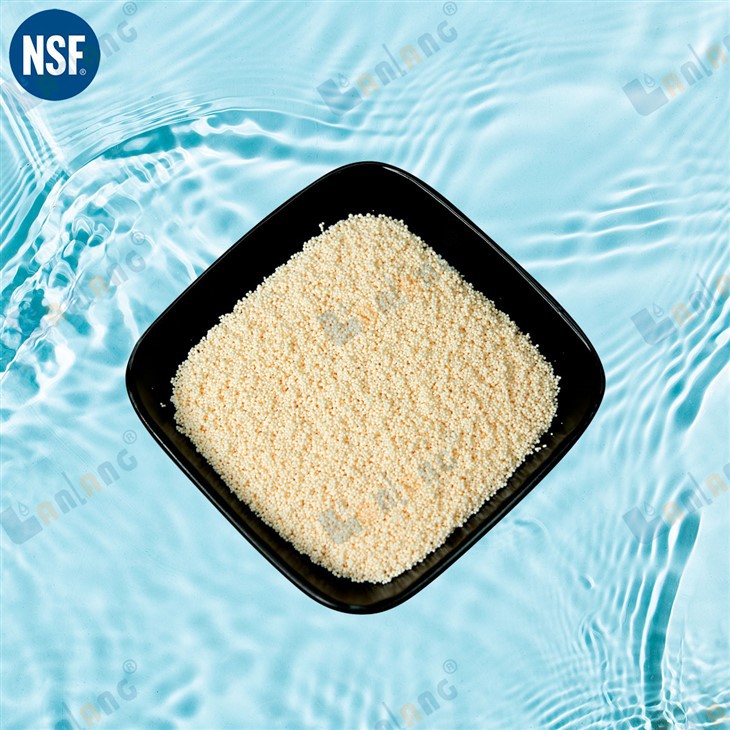Hey there! As a supplier of Weak Acid Cation Resin, I've seen firsthand how fouling can be a real headache for users. In this blog, I'll share some practical tips on how to prevent fouling of Weak Acid Cation Resin.
Understanding Weak Acid Cation Resin
Before we dive into prevention methods, let's quickly go over what Weak Acid Cation Resin is. Weak Acid Cation Resin is a type of ion exchange resin that's commonly used in water treatment processes, especially for demineralization. It's great at removing cations like calcium, magnesium, and sodium from water. For more details about our Weak Acid Cation Resin for Demineralisation, you can click the link.
What Causes Fouling?
Fouling of Weak Acid Cation Resin can be caused by a variety of factors. One of the main culprits is the presence of suspended solids in the water. These solids can clog the resin pores, reducing its effectiveness. Organic matter, such as humic and fulvic acids, can also coat the resin surface, preventing proper ion exchange. Another common cause is the presence of heavy metals, which can react with the resin and form insoluble compounds.
Preventive Measures
Pretreatment of Feed Water
The first step in preventing fouling is to ensure proper pretreatment of the feed water. This involves removing suspended solids, organic matter, and heavy metals before the water comes into contact with the resin.
- Filtration: Installing a good quality filter upstream of the resin bed can remove suspended solids. Sand filters, multimedia filters, and microfilters are commonly used for this purpose. These filters can trap particles of various sizes, preventing them from reaching the resin.
- Activated Carbon Filtration: Activated carbon is excellent at removing organic matter from water. It works by adsorbing the organic compounds onto its surface. By using an activated carbon filter, you can significantly reduce the amount of organic matter that reaches the resin, thus preventing fouling.
- Chemical Precipitation: For heavy metal removal, chemical precipitation can be an effective method. Adding chemicals like lime or soda ash can cause the heavy metals to form insoluble precipitates, which can then be removed by filtration.
Proper Resin Selection
Choosing the right resin for your application is crucial. Different resins have different properties and are suitable for different water conditions. For example, our NSF Food Grade Cation Exchange Resin TC113 is specifically designed for applications where food-grade compliance is required. It has excellent resistance to fouling and can provide long-term performance.

Regular Monitoring and Maintenance
Regular monitoring of the resin bed and the water quality is essential to detect fouling early. You can monitor parameters such as pressure drop across the resin bed, resin capacity, and water quality after treatment. If you notice any significant changes in these parameters, it could be a sign of fouling.
- Backwashing: Backwashing is a common maintenance procedure for resin beds. It involves reversing the flow of water through the resin bed to remove any trapped particles and loosen the resin beads. Regular backwashing can help prevent the buildup of fouling agents.
- Regeneration: Proper regeneration of the resin is also important. During regeneration, the resin is exposed to a concentrated solution of a regenerant, usually an acid or a salt. This process helps to remove the exchanged ions from the resin and restore its ion exchange capacity. Make sure to follow the manufacturer's instructions for regeneration to ensure optimal performance.
Control of Operating Conditions
Maintaining proper operating conditions can also help prevent fouling. Here are some key factors to consider:
- Flow Rate: Operating the resin bed at the recommended flow rate is important. Too high a flow rate can cause excessive pressure drop and may also lead to resin attrition. On the other hand, too low a flow rate may not provide sufficient contact time between the water and the resin, reducing its effectiveness.
- Temperature: The temperature of the feed water can also affect the performance of the resin. Most Weak Acid Cation Resins have an optimal operating temperature range. Make sure to keep the water temperature within this range to prevent fouling and ensure proper ion exchange.
- pH: The pH of the feed water can have a significant impact on the resin's performance. Weak Acid Cation Resins work best in a specific pH range. By adjusting the pH of the feed water, you can optimize the resin's ion exchange capacity and reduce the risk of fouling.
Special Considerations for Specific Applications
If you're using our NSF Certificate Weak Acid Cation Resin for Water Filter Cartridge in a water filter cartridge, there are some additional considerations.
- Cartridge Design: The design of the water filter cartridge can affect the flow pattern and the distribution of the water through the resin. Make sure the cartridge is designed to provide uniform flow and prevent channeling, which can lead to uneven fouling.
- Replacement Schedule: It's important to follow a regular replacement schedule for the water filter cartridge. Over time, the resin in the cartridge will become fouled and lose its effectiveness. By replacing the cartridge at the recommended intervals, you can ensure consistent water quality.
Conclusion
Preventing fouling of Weak Acid Cation Resin requires a combination of proper pretreatment, resin selection, monitoring, maintenance, and control of operating conditions. By following these tips, you can extend the life of your resin, improve its performance, and save on replacement costs.

If you're interested in learning more about our Weak Acid Cation Resin products or have any questions about preventing fouling, feel free to reach out to us. We're here to help you find the best solution for your water treatment needs. Let's start a conversation and see how we can work together to keep your water treatment system running smoothly.
References
- "Ion Exchange Resins: Properties and Applications" by Helfferich, F.
- "Water Treatment Handbook" by AWWA.
